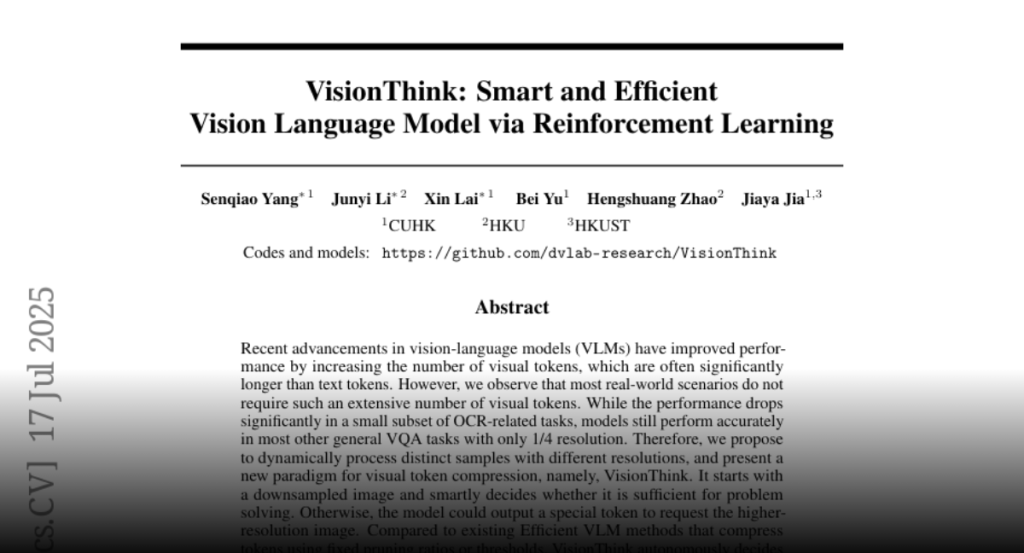VisionThink dynamically adjusts image resolution and visual token processing for efficient and effective vision-language tasks, improving performance on OCR tasks while reducing token usage in simpler tasks.
Recent advancements in vision-language models (VLMs) have improved
performance by increasing the number of visual tokens, which are often
significantly longer than text tokens. However, we observe that most real-world
scenarios do not require such an extensive number of visual tokens. While the
performance drops significantly in a small subset of OCR-related tasks, models
still perform accurately in most other general VQA tasks with only 1/4
resolution. Therefore, we propose to dynamically process distinct samples with
different resolutions, and present a new paradigm for visual token compression,
namely, VisionThink. It starts with a downsampled image and smartly decides
whether it is sufficient for problem solving. Otherwise, the model could output
a special token to request the higher-resolution image. Compared to existing
Efficient VLM methods that compress tokens using fixed pruning ratios or
thresholds, VisionThink autonomously decides whether to compress tokens case by
case. As a result, it demonstrates strong fine-grained visual understanding
capability on OCR-related tasks, and meanwhile saves substantial visual tokens
on simpler tasks. We adopt reinforcement learning and propose the LLM-as-Judge
strategy to successfully apply RL to general VQA tasks. Moreover, we carefully
design a reward function and penalty mechanism to achieve a stable and
reasonable image resize call ratio. Extensive experiments demonstrate the
superiority, efficiency, and effectiveness of our method. Our code is available
at https://github.com/dvlab-research/VisionThink.

